Royalty Revealed: Discovering a New Acquisition (Part One)
FIDM Museum Curator Kevin Jones shares a very exciting (and regal!) new acquisition in today's post. In this two-part series, learn how the Museum found this object, collaborated with a colleague across the pond to verify its origins, and its significance to the scholarship of royal dress.
****************************************************************************************************************
The FIDM Museum acquires objects for upcoming exhibitions, research projects, and just because they are beautiful. Sometimes years pass before they are displayed in our galleries, but all of our collections are readily available by appointment and, increasingly, online for anyone with an interest in fashion history. We have had garments and accessories donated by individuals or families with no prior connection to the Museum, and from long-standing supporters who know the kinds of objects we desire. Additionally, we are contacted by, or reach out to, dealers who might have something of interest. And, of course, we follow the international auction market. Occasionally, the trail to an object is circuitous, popping up at random, and leading us to places we would not otherwise find. This is what happened with our latest acquisition!
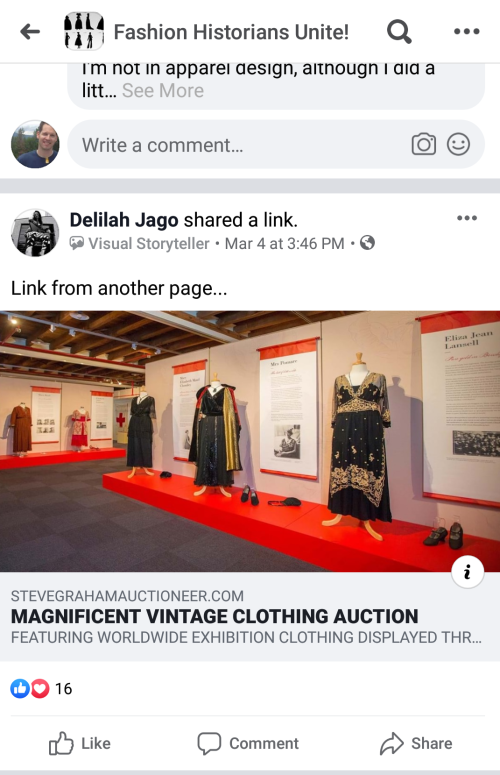
Facebook post by Delilah Jago on “Fashion Historians Unite!,” March 4, 2020.
I follow “Fashion Historians Unite!” on Facebook, and Delilah Jago, whom I do not know personally, posted on March 4, 2020 about an upcoming vintage clothing sale in Victoria, Australia. Curious about the collection from seeing the image attached to the advertisement—and not having heard of Steve Graham Auctioneer—I clicked on the link and quickly scrolled through the 500+ lots on my phone; it was a single-owner sale that also included furniture. I suddenly stopped at Lot 474. In a couple of small photos, I could see a magnificent evening ensemble with matched reception bodice, ball bodice, and trained skirt of black silk satin overlaid with black Chantilly lace embroidered with thousands of minute silver metal sequins, glass beads, jet, and prong-set rhinestones.
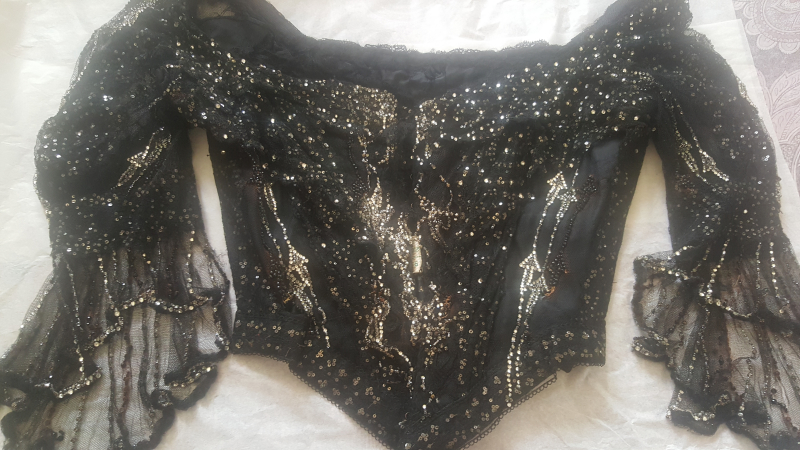 Ball Bodice, Henriette Favre, Paris, ca. 1902-06. FIDM Museum Purchase: Funds donated by Barbara Bundy, 2020.5.21B/C.
Ball Bodice, Henriette Favre, Paris, ca. 1902-06. FIDM Museum Purchase: Funds donated by Barbara Bundy, 2020.5.21B/C.
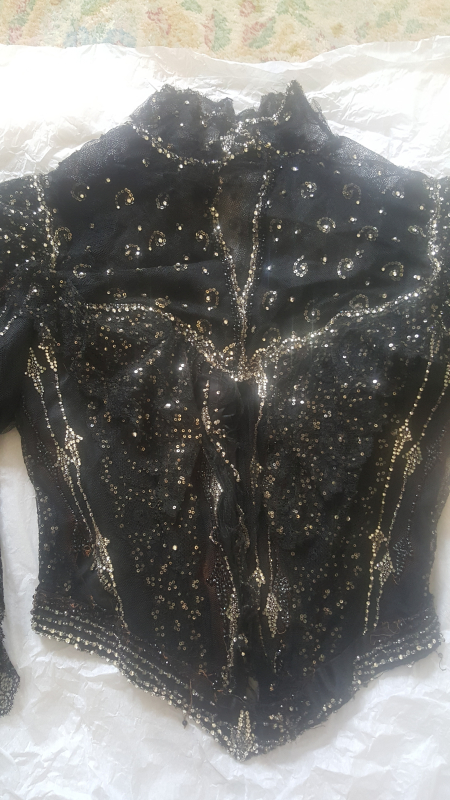
Reception Bodice, Henriette Favre, Paris, ca. 1902-06. FIDM Museum Purchase: Funds donated by Barbara Bundy, 2020.5.21A/C.
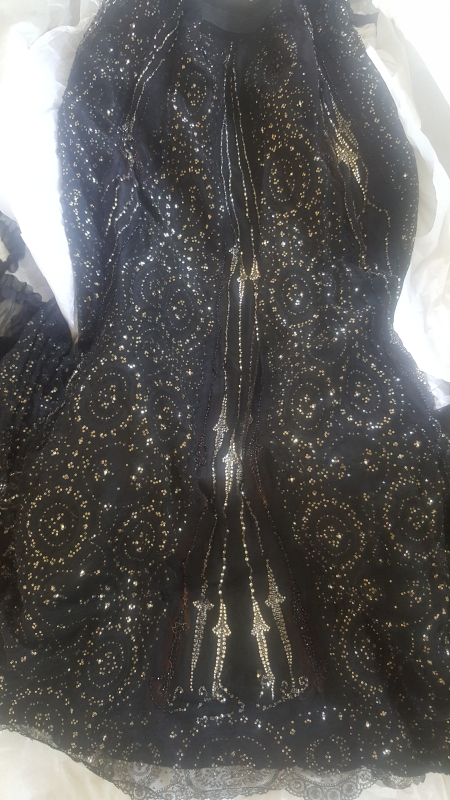
Evening Skirt, Henriette Favre, Paris, ca. 1902-06. FIDM Museum Purchase: Funds donated by Barbara Bundy, 2020.5.21C/C.
Stylistically, it was from the early 1900s—a period known as the “Edwardian Era,” named after King Edward VII (1841-1910). This ensemble was created during that opulent time for none other than his beautiful consort, Queen Alexandra (1844-1925)! After watching the live auction for four-and-a-half hours to make sure I did not miss bidding, I heard the auctioneer announce to the audience that the outfit was “going to Kevin in California”—so much for anonymity. Up to the time of the sale, there were only nineteen garments known to survive from Alexandra’s extensive wardrobe. Not many when you consider the documentation that exists about her life as one of the most photographed individuals of the second half of the nineteenth century and first decade of the twentieth. Excitingly, this new discovery brings that total up to twenty.
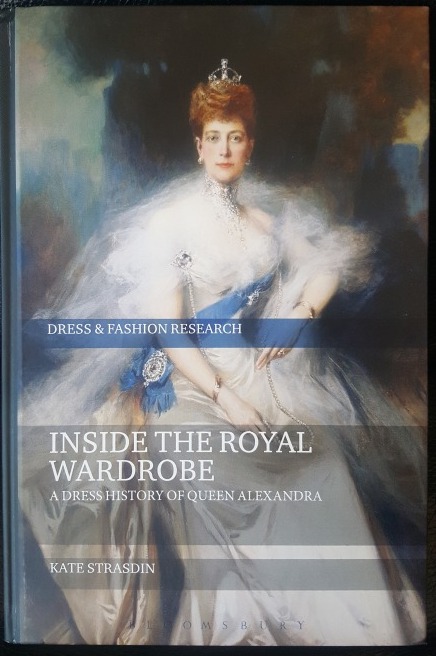
Cover: Kate Strasdin, Inside the Royal Wardrobe: A Dress History of Queen Alexandra (London and New York: Bloomsbury Academic, 2017).
In 2017, Dr. Kate Strasdin of Falmouth University, UK, published Inside the Royal Wardrobe: A Dress History of Queen Alexandra. This comprehensive book details Alexandra’s sartorial public life by analyzing the ledgers of her purchases and searching for the individuals (often in vain) who created and cared for them; biographies of some of the objects scattered across the world round out the survey. Among the items Dr. Strasdin wrote about is a blouse in the FIDM Museum—part of an important collection of European royal dress developed over the past decade. Fortunately, we now hold two of Alexandra’s garments—separated in time by forty years.
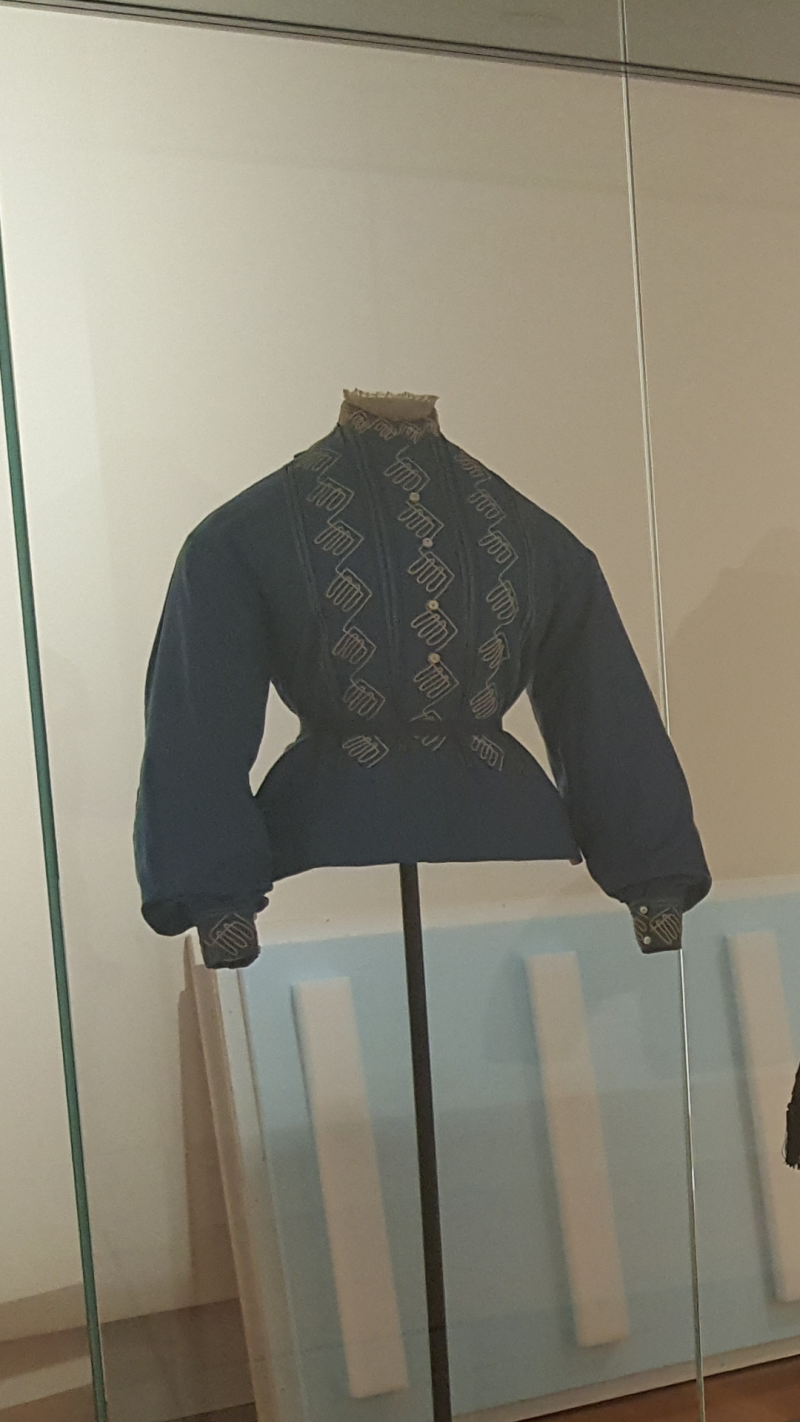 Queen Alexandra’s Blouse during installation of the exhibition Tudors to Windsors: British Royal Portraits at the Bendigo Art Gallery, Bendigo, Australia, February 2019.
Queen Alexandra’s Blouse during installation of the exhibition Tudors to Windsors: British Royal Portraits at the Bendigo Art Gallery, Bendigo, Australia, February 2019.
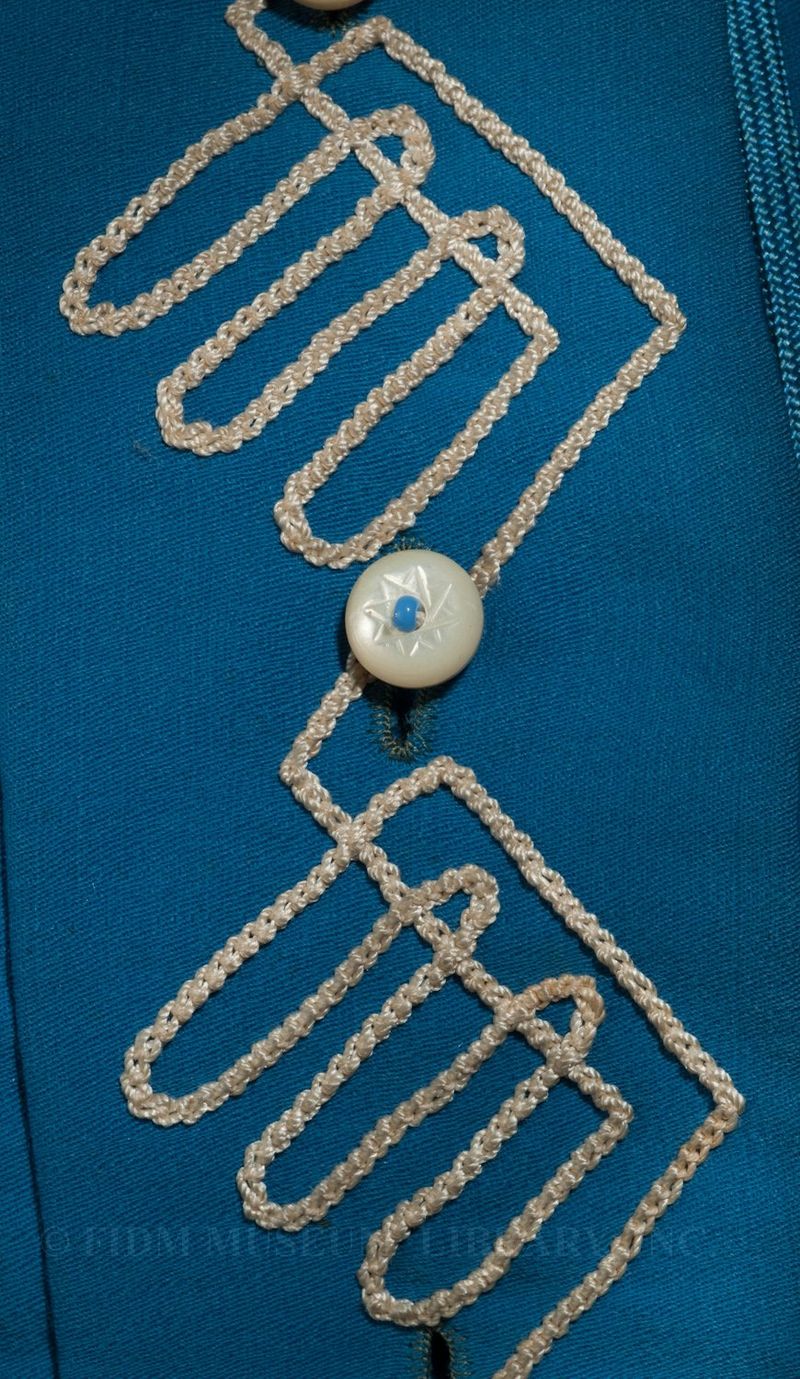 Queen Alexandra’s Blouse [detail], Great Britain, ca. 1863. Helen Larson Historic Fashion Collection. FIDM Museum Purchase, 2018.5.14.
Queen Alexandra’s Blouse [detail], Great Britain, ca. 1863. Helen Larson Historic Fashion Collection. FIDM Museum Purchase, 2018.5.14.
Our first acquisition is believed to have come from her 1863 trousseau. The bright-blue wool blouse is sporty, with unboned construction and jaunty braid trimming center front and its collar and cuffs. Along with her altered wedding gown in the Royal Collection Trust [RCIN 71943], it is one of Alexandra’s earliest known garments worn when Princess of Wales. Our new second purchase allows us to investigate the later life of this glamorous, world-renowned monarch. Stay tuned for Part Two when research uncovers some of the history of Queen Alexandra’s embroidered evening ensemble.